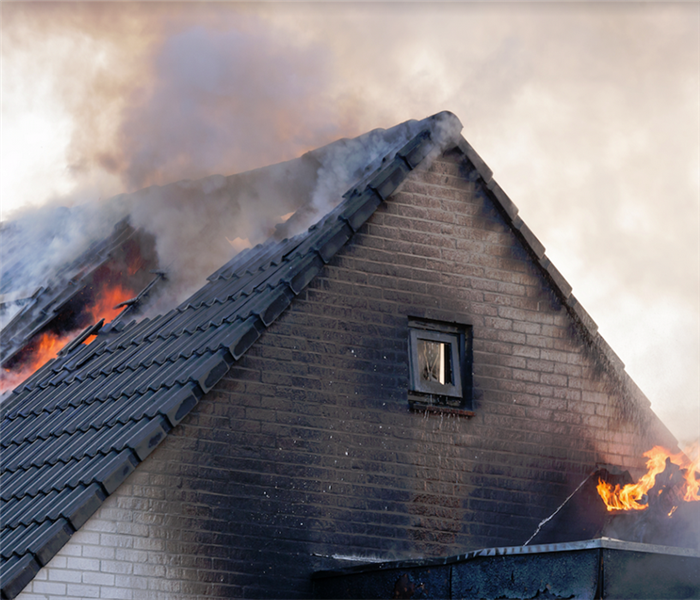Understanding the Different Types of Smoke Residue After Fire Damage to Your Naples Home or Condo
9/17/2021 (Permalink)
 Fire and smoke residues need to be dealt with by a professional. Contact our team right after the fire fighters leave for best results.
Fire and smoke residues need to be dealt with by a professional. Contact our team right after the fire fighters leave for best results.
Stains and Odors Accompany Fire & Smoke Incidents--Call SERVPRO for Cleanup and Restoration
Not all smoke and soot residue after fire damage to your home is the same. The success of a restoration process depends on the type of residue. While some types of residue are easier to clean, others can be notoriously difficult to eliminate.
SERVPRO technicians can employ different methods to tackle a different type of smoke residue after a fire incident to your Naples home. The type of smoke and soot residue affects the time required for the restoration.
Dry and Wet Smoke Residue
Almost all fires produce both wet and dry smoke residue in varying proportions. As both of these residues differ in the damage that they can potentially cause, they require different methods of elimination.
Fast burning and fires that have an ample supply of oxygen produce predominantly dry smoke. On the other hand, fires that burn slowly and are deprived of oxygen produce a predominantly wet smoke residue.
Dry residue is easier to clean, and SERVPRO IICRC-certified professionals can restore more material in such cases. Cleaning such residues requires less aggressive procedures and causes lesser secondary damage. That said, the dry residue is generated by hotter fires, which can cause more damage compared to the colder fires.
The wet smoke residue, on the other hand, is predominantly generated when the fire burns slowly and is more difficult to clean. Wet smoke contains a higher proportion of solvent and other liquid components. As fires generating wet smoke burn slower, they have ample time to reach between crevices and enclosed areas. It can be quite challenging to clean the wet smoke residue even if the damage due to the actual fire is minimal. Extreme measures such as stripping and refinishing may be required to clean such residue.
Protein Residue
Protein residue is a common feature of fires that originate in the kitchens and involve burning poultry, meat, or fish. These organic materials produce smoke that is rich in protein residue and has a yellow or amber color. Such smoke can cause discoloration of walls and other exposed surfaces. Another problem with protein residue is the odor, which can linger on for days after the incidence and often requires deodorization. Thermal fogging can follow the path of the odor airborne smoke odors and chemically alter them. This challenge is handled by SERVPRO FST technicians by also setting up ozone machines when the property is vacant of people, pets, and plants, and when not, hydroxyl generators.
Call SERVPRO of Naples/ Marco Island at (239) 302-5700 today to schedule an appointment for Naples Manor and Marco Island.






 24/7 Emergency Service
24/7 Emergency Service